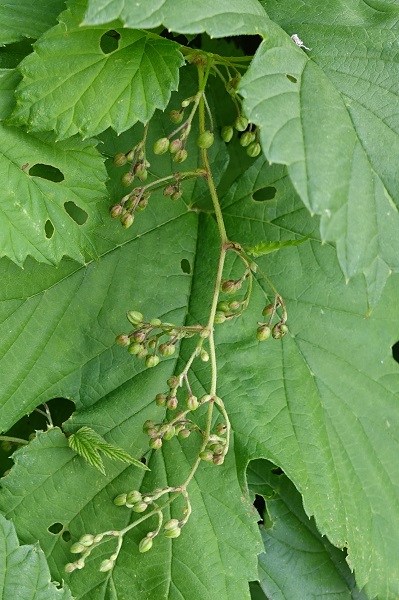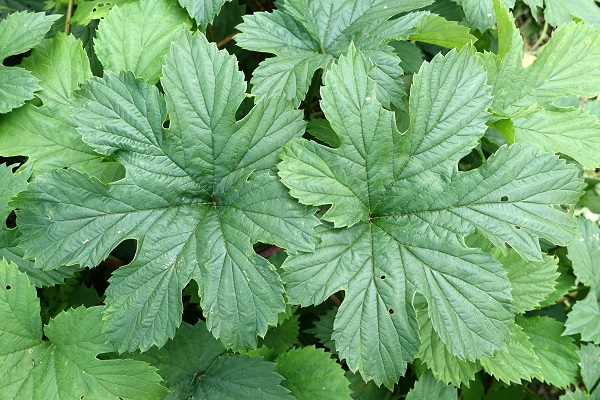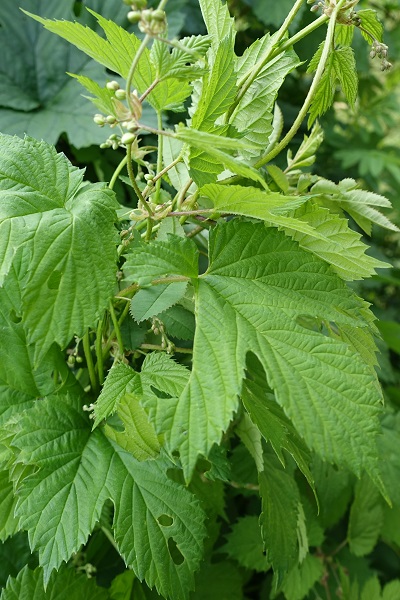
| Scientific name: | Humulus lupulus L. | |
| Swedish name: | Humle | |
| German name: | Hopfen | |
| Nederlandse naam: | Hop | |
| English name: | Common hop | |
| Family: | Cannabaceae, Cannabis and Hop family, Hampväxter |

|
| Life form: | Perennial vine | |
| Stems: | Height 1- 6m, covered with hooked thorns and glandular dots | |
| Leaves: | Opposite, broad, palmately lobed and veined | |
| Flowers: | Cream colored; separate male and female plants; male and female flowers spring from the axils of the leaves on separate plants; flowers of the male plant grow in panicles, 3 to 5 inches long, but are not cultivated; female flowers are used for medicinal purposes | |
| Flowering Period: | June-July | |
| Fruits: | The fruit of the female plant are called strobiles and resemble small pine cones | |
| Habitat: | Anthropogenic (man-made or disturbed habitats), floodplain (river or stream floodplains), forests, shrublands or thickets | |
| Distribution: | Southern and central Sweden, but along the coast even farther north |
 Derivation of the botanical name: Humulus, Low German word humela for hop, which is the common name of this genus placed by Munz in the Moraceae or mulberry family, but moved by Jepson along with Cannabis into the new family Cannabaceae. lupulus literally a "small wolf," alluding to the plant's habit of climbing over and smothering trees on which it grows. H. lupulus is the European hop and was once called "willow-wolf" because of its propensity for climbing on willows.
The female fruit of the common hop is used to flavor beer and prevent bacterial contamination during fermenting.  |